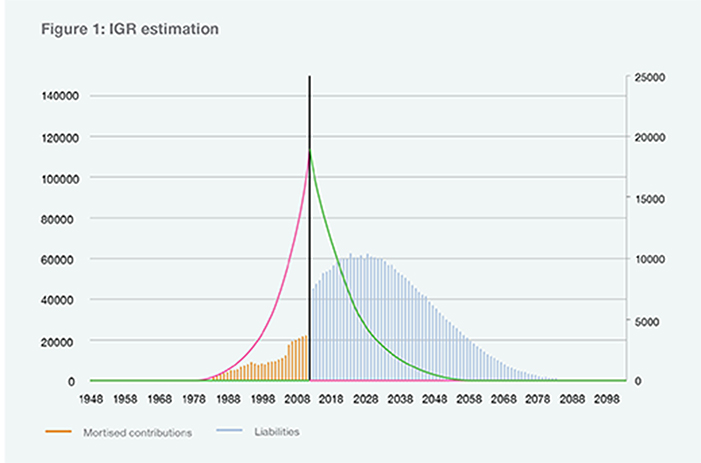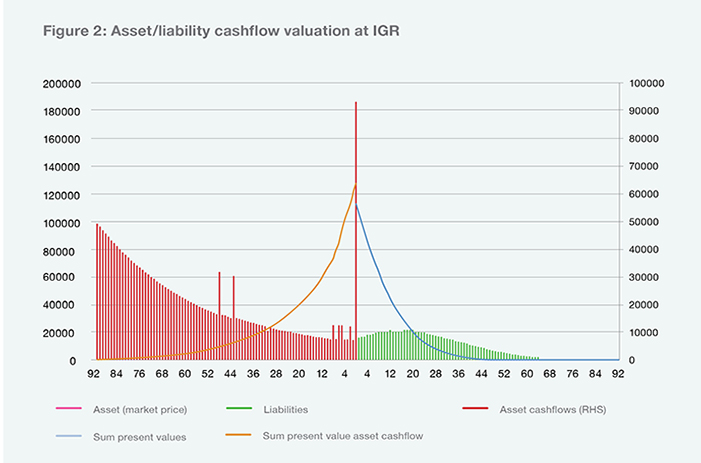The Department for Work and Pensions’ (DWP) call for evidence on the question of the smoothing of asset and liability values for defined benefit (DB) pension schemes has reopened an old but simmering debate – fair value and market consistency. Far too much of this debate has consisted of unfounded assertions, which have proliferated and taken on lives of their own.

“EIOPA has been proposing that pension schemes should produce holistic balance sheets and we have seen some amazingly complex models developed to address this question. These are unnecessary.”
The current accounting and valuation standards do produce results that are volatile and biased, as has become evident to many pension scheme trustees and other stakeholders. It was this disquiet, on the part of, among many, the National Association of Pension Funds, Confederation of British Industry and Association of Member Nominated Trustees, that led to the DWP call for evidence. Management of a scheme under these standards is a thankless and expensive task of Sysiphean dimension.
Perhaps the greatest obstacle to conclusive resolution of this debate has been the absence of a technique that fully resolves the issues which have been identified. In a recent paper [1], prepared for the European Federation of Financial Analysts Societies, this lacuna has been filled.
In this paper, the internal growth rate (IGR) of a pension system is introduced, along with methods that fully meet reporting objectives and management needs. The proposed method is:
1) Project liability expense cashflows
2) Project asset income cashflows
3) Compare these at the internal growth rate integral to the awards.
Liability projection is standard actuarial routine in scheme valuation; no change is proposed. In order to achieve consistency in comparison, the projected cashflows from assets, rather than current asset values derived from market prices [2], are compared with the pension liability projections. The projection of asset cashflows is well established in the econometric literature. Comparison in this way also mitigates a technical issue that might otherwise be relevant; the question of the convexity or concavity of these payment sequences [3].
Inputs and outputs
Viewed from a systems perspective, the evaluation of the current state of a pension fund is a matter of considering the inputs (contributions) and the desired outputs (pensions). With contributions and pensions separated in time, it is rational to consider interim states. These interim valuations can inform observers as to the sufficiency of the arrangements in place, and interventions made if necessary or desirable.
For sustainability and stability of the system, this amounts to no more than requiring that the present value of contributions must equal the present value of the promised pensions [4]. This determines the IGR for the system or fund. The IGR is unique and is fully determined by the terms of the award. Formally, this is simply a fair value condition. The IGR avoids any need for exogenous variables, such as the use of arbitrary rates and prices by considering an element of the system overlooked in current arrangements, contributions; these are the inputs to the process that delivers the output, pensions. The IGR enables accurate and consistent evaluation of the state of the pension system when applied to the income and expense projections. Moreover, when discounting at a single rate is used as a valuation mechanism, then the IGR is the only rate satisfying these requirements.
The many alternatives in use (risk free rate, gilts, expected asset return, etc) lead to over or under estimates, bias and volatility. The main reason for this is that they are exogenous to the system and do not reflect scheme arrangements and dynamics.
The added benefits of evaluation at the IGR include stability of reporting and elimination of spurious external effects in pension fund reporting. In this way, it will be possible to avoid unnecessary and costly interventions in scheme management, that are purely aimed at improving reporting under current (misleading) standards rather than on improving fund dynamics. The estimate of fund IGR may incorporate the entire fund design, including funding arrangements with sponsors and the use of insurance and guarantees. This is not possible using many currently-used methods, for example, a market value based approach.
The IGR can be used to assess and compare pension system performance, and to measure the impact of management interventions such as liability driven investment and the closure of pension schemes to new participants. It also sheds new light on the debate on the affordability of DB schemes. The IGR can be estimated in a number of ways, but the simplest of these is illustrated as Figure 1, which shows the contributions [5] and projected pensions payable and their present values under the IGR.

Figure 1 – This can then be used as the discount rate at which income and expense cashflows are compared. The results of this comparison for an illustrative scheme are shown as Figure 2.

Figure 2 – This figure shows that the present value of projected income flows exceeds the present value of pension expense flows, when both are evaluated at the IGR. In other words, the scheme is solvent having a small surplus. It is notable that the present value of income is far lower than the market price valuation of those assets. This arises because the income yield on assets is currently far lower than the IGR. The corollary to this would be that if the income yield on market assets exceeded the IGR, the value of that income stream would exceed the market value of the assets. This is rarely the case.
- 1
- 2
- »




Comments